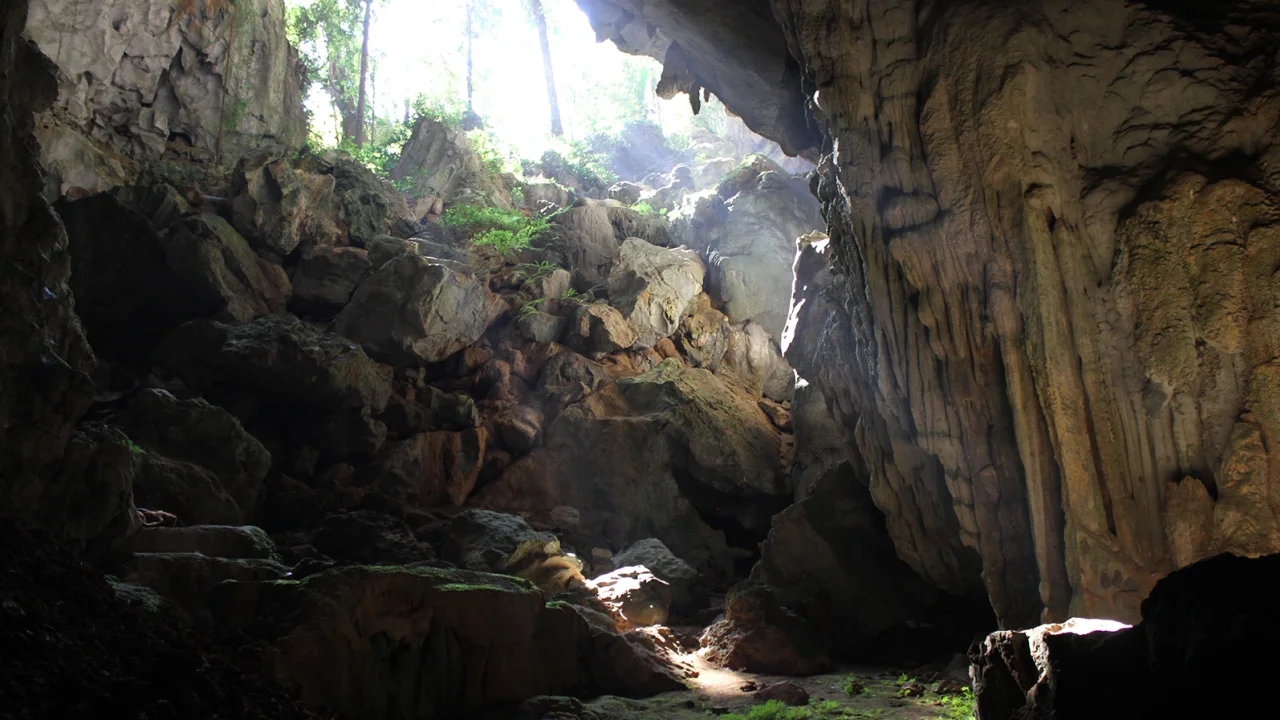() — Humans originated in Africa, but archaeologists have hotly debated exactly when our first ancestors left the continent and how they spread across the globe.
Two fossils found in a cave in northern Laos suggest that Homo sapiens, our species, lived in the region around 86,000 years ago, a new study indicates. The find challenges the prevailing idea that humans’ trajectory across the planet was linear and occurred in a single wave some 50,000 to 60,000 years ago.
“Most likely, this first migration was unsuccessful, but that doesn’t mean that Homo sapiens had already reached this region, which is a remarkable achievement,” Kira Westaway, study author and associate professor at the University of California, said by email. Australian Macquarie University.
DNA analyzes of present-day human populations have supported the hypothesis that the first humans left Africa between 50,000 and 60,000 years ago, and archaeologists have thought that our earliest ancestors probably followed coastlines and islands across Southeast Asia to Australia.
However, a growing number of ancient human remains discovered in China and the Levant demonstrate that this chapter of human history is more complicated than previously thought.
The migration 50,000 to 60,000 years ago “that contributes to our current gene pool may not have been the first,” Westaway says. “It is quite possible that there were earlier migrations that were unsuccessful and therefore did not contribute their genetics to our modern populations.”
The two Laotian fossils, a leg bone fragment and part of the front of a skull, were found in the Tam Pa Ling cave. The archaeological site was discovered in 2009, at which time another partial skull was found.
In addition to the latest findings, two jaws, a rib and a phalanx have also been discovered at the site, and the physical characteristics of the remains suggested they belonged to early modern humans.
Archaeologists began excavating in the cave more than a decade ago. Credit: Kira Westaway
The difficulty in dating the first human fossils
The dating of the fossils from the archaeological site proved difficult. They were too old for radiocarbon dating, which allows remains to be dated to around 46,000 years ago. In addition, the cave is part of a UNESCO World Heritage Site, which means that human fossils cannot be directly dated due to Laotian laws protecting the area, according to Westaway.
Therefore, the team that participated in the study, published this Tuesday in the academic journal Nature Communications, had to use two different techniques to estimate the age of the fossils.
The researchers measured luminescence in the quartz and feldspar minerals in the sediment layer, a method that reveals how long it has been since a material with crystalline minerals was heated or exposed to sunlight.
Going deeper into the excavation, they also found two animal teeth in the same layer as the human remains and dated them by measuring the radioactive decay of uranium isotopes, chemical elements present in tooth enamel, in a technique called spin resonance dating. electrons.
Following this method, the two fossils were calculated to be between 68,000 and 86,000 years old, with the leg bone fragment being the oldest.

Archaeologists believe that the cave was occupied by early humans for around 50,000 years. Credit: Kira Westaway
The chronology of the first human migrations, in question
In addition to calling into question the timing of early human migrations, the site also questions conventional thinking that early human travel in the region would have involved skirting coastlines and island locations such as Sumatra, the Philippines and Borneo.
The highland region, in the heart of mainland Southeast Asia, was and still is heavily forested, at an altitude of about 1,100 meters and at a distance of at least 300 kilometers from the sea.
“What is fascinating about this research is the location of the cave. We know that hominids tended to move inland through river valleys, but this location confirms our suspicions that early Homo sapiens had the ability to adapt and disperse through forested regions of highlands well ahead of schedule,” Westaway explained.
Archaeologists believe the cave was occupied for almost 50,000 years, and the latest discoveries underscore the region’s exciting potential for paleoanthropology.
At a nearby site, known as Cueva de la Cobra, a tooth was found that is believed to have belonged to a Denisovan, an elusive early human. However, that tooth is 70,000 years older than the oldest remains at Tam Pa Ling, so there is no evidence that the two human species mixed or coexisted, Westaway said.
The world’s oldest figurative rock art was discovered in caves in Indonesia, and extinct human species such as tiny Homo floresiensis and Homo luzonensis were found on islands in Indonesia and the Philippines.
The team hopes to find more human fossils in the region.
“The Tam Pa Ling site is one of five other (found) on that karst mountain that contains all the human evidence,” Westaway said.




![[Img #74661]](https://thelatestnews.world/wp-content/uploads/2024/12/The-power-of-ultrasound-150x150.jpg)








![[Img #74661]](https://thelatestnews.world/wp-content/uploads/2024/12/The-power-of-ultrasound-300x200.jpg)

